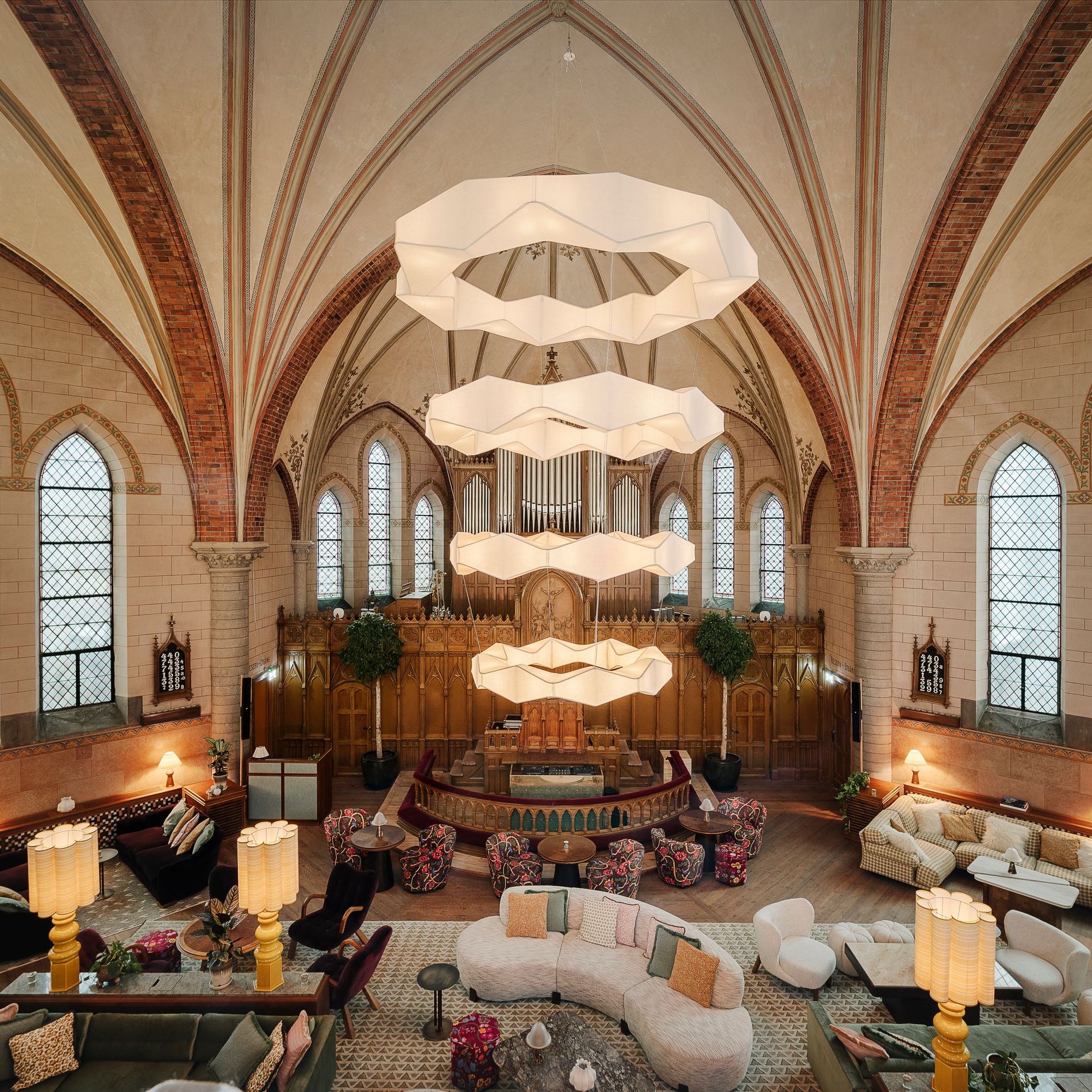Soho House lead designer Severine Lammoglia tells us how she converted an old church into Soho House Stockholm
Entering Soho House Stockholm is somewhat of a religious experience. With its expansive vaulted ceilings and ornate stained glass windows, the structure was once – unmistakably – a church. Most recently, it was owned by celebrated Swedish director Jonas Åkerlund, who adapted the Östermalm building into a private residence in 2014. Many of the original architectural flourishes remain from when it was first constructed in the late 1800s. “The first time I saw the space, it was quite impressive,” says Soho House’s lead designer Severine Lammoglia. “And at the same time, it was a bit scary.”
Lammoglia’s greatest obstacle was adapting the intimidatingly large church hall into an environment that is unmistakably Soho House – an aesthetic defined by a certain eclectic coziness. “It was like, how am I going to make this work without it just looking like a sea of furniture in the middle of the big space?” she says, adding that this is the first time Soho House has taken on a former church.

Photo: Soho House


Size wasn’t the only challenge; the building is listed as a cultural landmark, which presents certain limitations when approaching the design. The floor, for instance, had to be constructed with “a special kind of wood in a certain size”. And there was one other major dilemma. “We can’t pin things to the wall,” Lammoglia says – a particularly troubling notion considering each Soho House is known to have an exceptional art collection (they got around it by hanging paintings by Swedish artists like Anna Bjerger and Fredrik Söderberg from the ceiling). Elsewhere, pieces by Carsten Höller and renowned duo Nathalie Djurberg and Hans Berg fill out the room.
The first time I saw the space, it was quite impressive, and at the same time, it was a bit scary.
Severine Lammoglia, lead designer at Soho House
But the centrepiece is the chandelier. Lammoglia describes it as the detail that “kind of grounds everything”. Fashioned in four tiers of linen, the massive, geometrical fixture was realised by Swedish-Danish design duo Olsson and Bradfield (formerly of Frama). Basking in its soft light are carefully curated sofas and chairs, tables and poufs, many custom-made or sourced from vintage dealers across Scandinavia for the occasion. “We went oversized, so the scale of the furniture fits the scale of the space,” Lammoglia says. Among the furnishings is a collaboration with beloved Swedish design house Svenskt Tenn – bespoke items upholstered in Josef Frank’s iconic prints. Enjoying a cocktail – a signature Picante de la Casa, perhaps – on the mezzanine, one can really take in the beauty of the house, which is awash in plum purples and dusty greens. “We’ve played a lot with colour,” Lammoglia says.

Photo: Soho House

Downstairs lies the club’s restaurant, Cecconi’s, entered around an open kitchen. In Stockholm’s rare warmer months, guests can drink and dine in the courtyard.
After much anticipation and speculation, the house has opened its doors. Naturally we’ve already stepped inside – Vogue Scandinavia hosted an intimate dinner in the unfinished church-come-house a few weeks ago. We are beyond thrilled to welcome the space to the neighbourhood.
